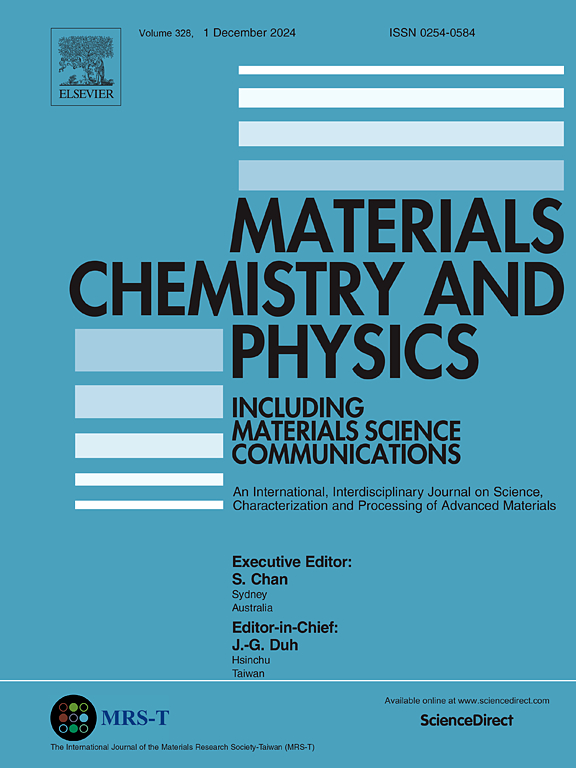High-efficiency lithium-ion sieves synthesized via hydrothermal-roasting method
IF 4.3
3区 材料科学
Q2 MATERIALS SCIENCE, MULTIDISCIPLINARY
引用次数: 0
Abstract
Titanium-based ion sieves have consistently demonstrated good adsorption performance in the adsorption of Li+. However, the slow adsorption rate has limited their further industrial application. In this study, the synthesis of ion sieves by a simple hydrothermal-roasting method using surfactant modification. Based on preliminary experiments, ion sieves with excellent adsorption properties can be synthesized at 450 °C. Through characterization analysis such as SEM and contact Angle measurement, the sample was found to have a uniform shape and size nanostructure. H2TiO3 (HTO-1) had good hydrophilic properties, providing more adsorption sites for Li+ adsorption and improving the adsorption rate of ion sieves. Through the adsorption experiment (initial Li+ concentrations: 50, 100, 200, 300 mg g-1, T = 35 °C, pH = 12.3), HTO-1 could reach more than 80 % of the equilibrium adsorption capacity within 15 min, and the maximum adsorption capacity reached 87.5 mg g−1. The pseudo-second-order kinetic and Langmuir models proved that the material underwent a monolayer chemisorption process. HTO-1 had excellent selectivity for Li+ in various ionic solutions. After five cycles of adsorption experiments, the adsorption capacity remained above 90 % of the initial value and the dissolution loss rate of Ti4+ remained below 0.3 %, the material shows good structural stability compared to other ion sieves. This work provides a reference for preparing lithium-ion sieves with better performance and higher efficiency.
水热焙烧法制备高效锂离子筛
钛基离子筛在吸附Li+方面一直表现出良好的吸附性能。然而,吸附速度慢限制了其进一步的工业应用。本研究采用表面活性剂改性的简单水热焙烧法制备了离子筛。初步实验表明,在450℃下可合成具有优异吸附性能的离子筛。通过扫描电镜(SEM)和接触角测量等表征分析,发现样品具有形状和尺寸均匀的纳米结构。H2TiO3 (HTO-1)具有良好的亲水性,为Li+的吸附提供了更多的吸附位点,提高了离子筛的吸附率。通过吸附实验(初始Li+浓度:50、100、200、300 mg g-1, T = 35℃,pH = 12.3), HTO-1在15 min内可达到平衡吸附容量的80%以上,最大吸附容量达到87.5 mg g-1。拟二阶动力学模型和Langmuir模型证明了材料的单层化学吸附过程。HTO-1在各种离子溶液中对Li+都有很好的选择性。经过5次循环吸附实验,该材料的吸附容量保持在初始值的90%以上,Ti4+的溶解损失率保持在0.3%以下,与其他离子筛相比,该材料具有良好的结构稳定性。为制备性能更好、效率更高的锂离子筛提供参考。
本文章由计算机程序翻译,如有差异,请以英文原文为准。
求助全文
约1分钟内获得全文
求助全文
来源期刊

Materials Chemistry and Physics
工程技术-材料科学:综合
CiteScore
8.70
自引率
4.30%
发文量
1515
审稿时长
69 days
期刊介绍:
Materials Chemistry and Physics is devoted to short communications, full-length research papers and feature articles on interrelationships among structure, properties, processing and performance of materials. The Editors welcome manuscripts on thin films, surface and interface science, materials degradation and reliability, metallurgy, semiconductors and optoelectronic materials, fine ceramics, magnetics, superconductors, specialty polymers, nano-materials and composite materials.
 求助内容:
求助内容: 应助结果提醒方式:
应助结果提醒方式:


